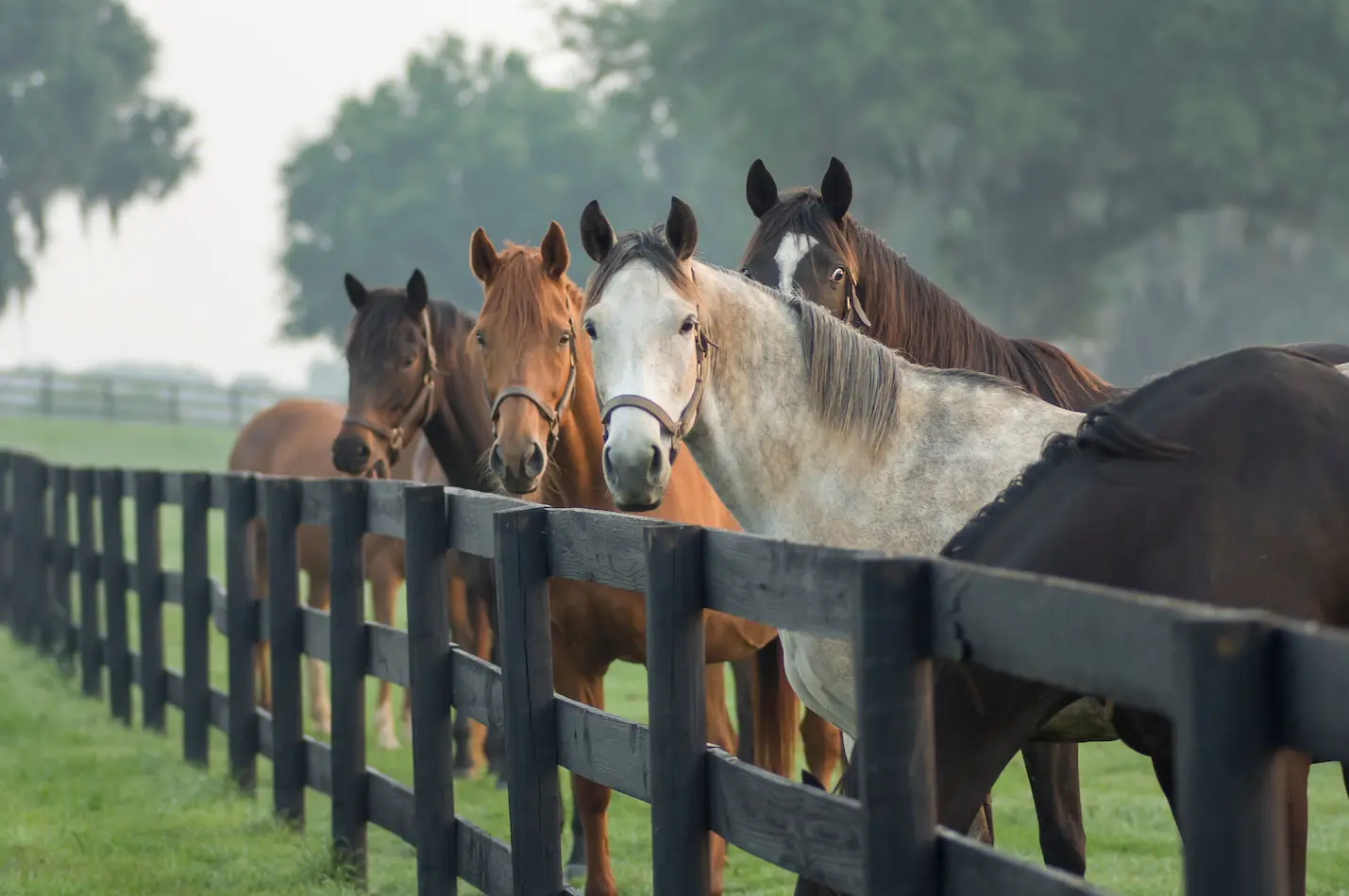There’s a lot of conventional wisdom out there about diagnosing and treating ulcers – yet ulcers continue to be a prevalent problem for horses. In order to keep your horse at its healthy best, it’s important to understand the signals your horse is giving you as well as all of the options for treating and preventing ulcers. The “Your Horse Ulcer Free” series will equip you with the knowledge to recognize, treat, and ultimately prevent equine ulcers in a better, more lasting way.
In Part 1: Overview of Equine Ulcers, we filled you in on the basics of equine ulcers. In Part 2 we talked about causes and symptoms of gastric ulcers. Today we discuss the less understood but equally damaging colonic ulcers, or ulcers of the hindgut.
Colonic Ulcers in Horses: Ulceration in the Hindgut
Gastric ulcers have been in the spotlight in recent years, thanks to well-known treatment and extensive research in this area. As a result, many people associate equine digestive health with stomach health. But truly understanding the horse’s digestive system means understanding the significance of the hindgut.
This attention to gastric ulceration (i.e. of the stomach) is ironic, if not downright detrimental. The stomach represents less than 10% of the total volume of the digestive tract. On the other hand, the hindgut (consisting of the cecum and colon) is huge and vital to the horse’s digestive process and overall health. Most importantly, it is the home of a huge bacterial environment that converts fiber to energy; the horse is known as a “hindgut fermenter,” meaning it obtains most of its energy by fermenting forage in its colon.
Because the hindgut plays such a critical role in digestion and health, it may also be the source of so many of the problems we are seeing.
Thanks to extensive research by Franklin L. Pellegrini, DVM, we now know that hindgut ulcers do exist. In fact, they are rather common. Colonic ulcers, or lesions found in the colon, predominantly affect performance horses and are frequently identified in horses already suffering from gastric ulcers.
Causes of Colonic Ulcers in Horses
As with gastric ulceration, ulcers in the hindgut occur when the protective mucosal lining is compromised. The causes of this compromise is a matter of debate, and may reflect numerous potential sources:
Right Dorsal Colitis
Historically, colonic ulcers have been attributed primarily to right dorsal colitis caused by the use of NSAIDs like the common anti-inflammatory phenylbutazone, or Bute. Bute works to reduce pain and inflammation by blocking chemicals called prostaglandins that are released from damaged tissue. The problem is that normal healthy tissues, including those responsible for the mucus production and blood flow regulation in the gut, also release prostaglandins. When the good prostaglandins are also blocked, ulcers are known to develop in the horse’s right dorsal colon.
Parasites
Parasites setting up house in the hindgut were formerly thought to be a primary cause of colic and other hindgut issues. However, today’s anthelmintics are highly effective against the types of parasites that affect the hindgut and that risk has all but been eliminated. In rare cases where there is parasitic involvement, the lesions that are created may open the door for ulceration.
Hindgut Acidosis
When large amounts of simple carbohydrates (like those in sugar and starches) reach the hindgut undigested, they interfere with the good bacteria that work to ferment fiber. This overload of starch – common with today’s feeding practices and processed feeds – causes bacteria to produce lactic acid. This raises the overall acidity of the hindgut (which is a lowering of the pH), and produces a condition called hindgut acidosis.
Hindgut acidosis results in good fiber-digesting bacteria dying off, releasing toxins, called endotoxins. This is thought to be a pre-cursor to colonic ulcers. We believe that the drop in pH from hindgut acidosis reduces mucus production, which leaves the surface of the digestive tract unprotected. Also as a result, pathogenic or bad bacteria proliferate while good bacteria die off. Because pathogenic bacteria require iron they are likely to attach to the micro blood vessels that have now been exposed in the intestinal lining, leading to ulcers. In turn, all of this can also lead to colic and laminitis.
Because hindgut acidosis is caused by how we commonly feed horses today, this condition as well as the resulting ulcers are a very real risk for many horses.
Identifying Colonic Ulcers in Your Horse
The signs of digestive discomfort in horses are often the same, whether it’s gastric or colonic ulcers or something else.
Watch for these signals that can signal a digestive issue, possibly colonic ulcers:
- weight loss and/or general decline in body condition
- resistance under saddle
- irritability and other changes in attitude
- lack of energy and stamina
- loss of appetite
- behavior indicating discomfort, such as pawing or laying down excessively
- low-grade anemia
And because the hindgut’s large size and position, some symptoms often attributed to gastric ulcers are more likely a sign of colonic ulcers:
- girthiness
- sensitivity in the flank area
- difficulty bending, collecting, and extending
If your horse is exhibiting any of these symptoms and testing shows that its manure pH is low, your horse is likely suffering from colonic ulcers.
Colonic ulcers in horses, while more difficult to diagnose, are still a very real threat that can lead to even more damaging conditions for your equine partner.
Now that you’ve gained a basic understanding of what causes ulcers in horses, it’s time to delve into the most important topics: diagnosing, treating, and preventing ulcers. We’ll be discussing these three topics at length in the second half of the Your Horse Ulcer-Free series. Be sure to subscribe to our feed so that you don’t miss out on learning how what you can do to keep your horse ulcer-free.



